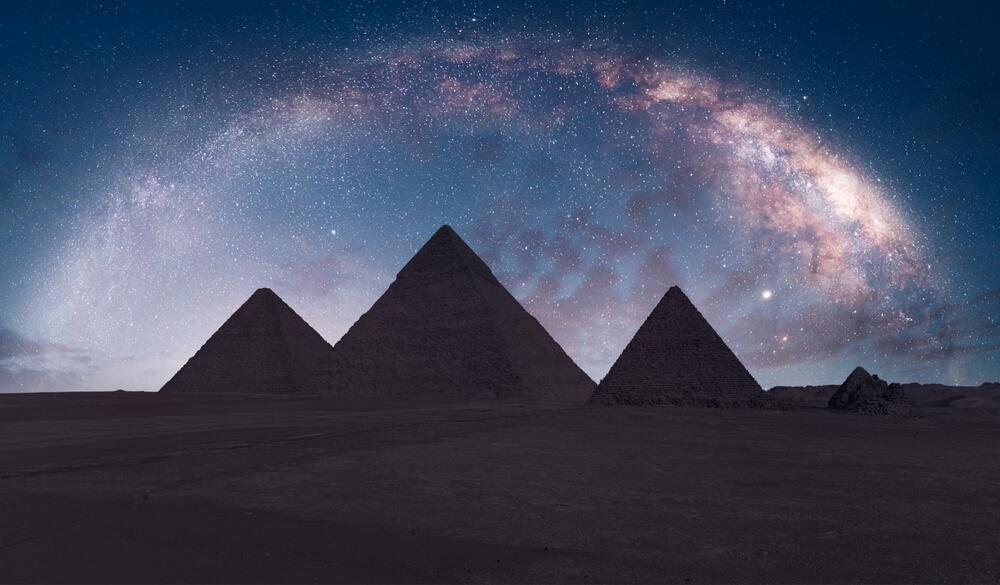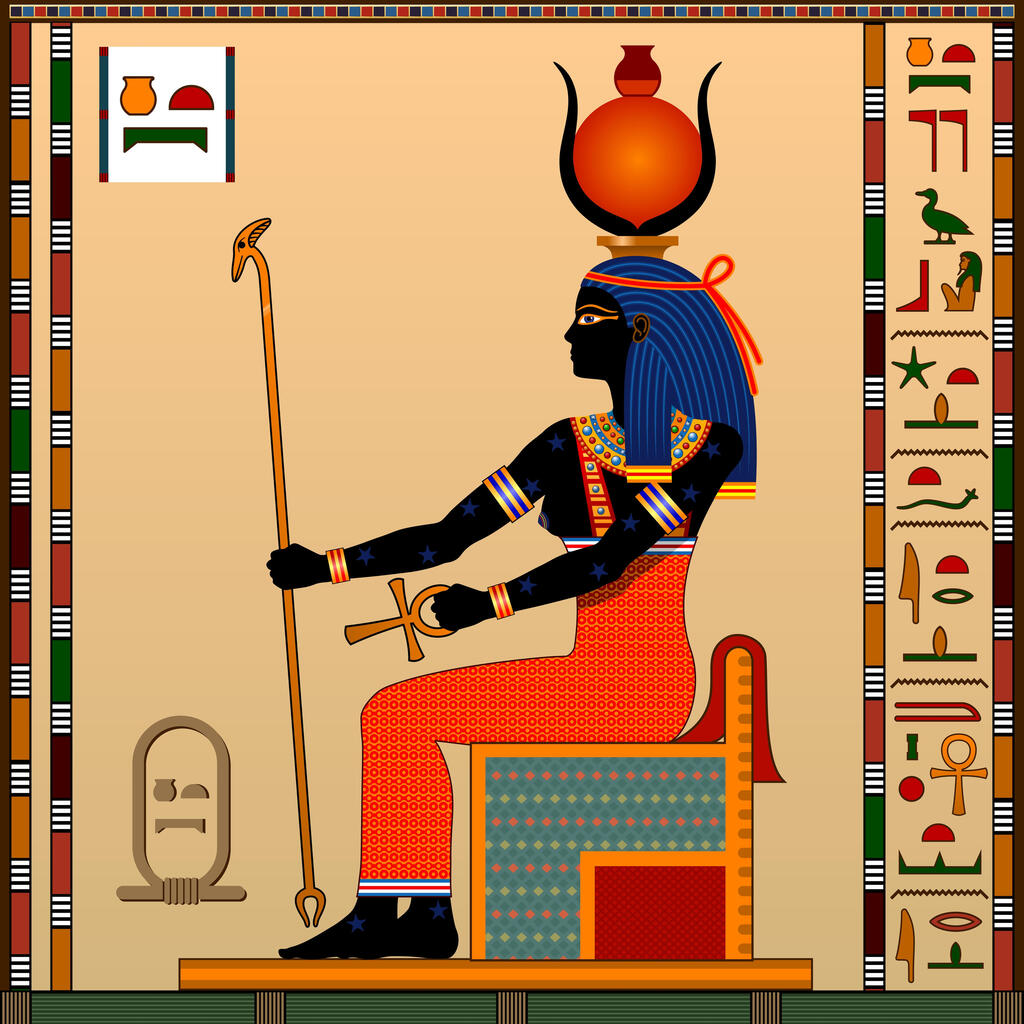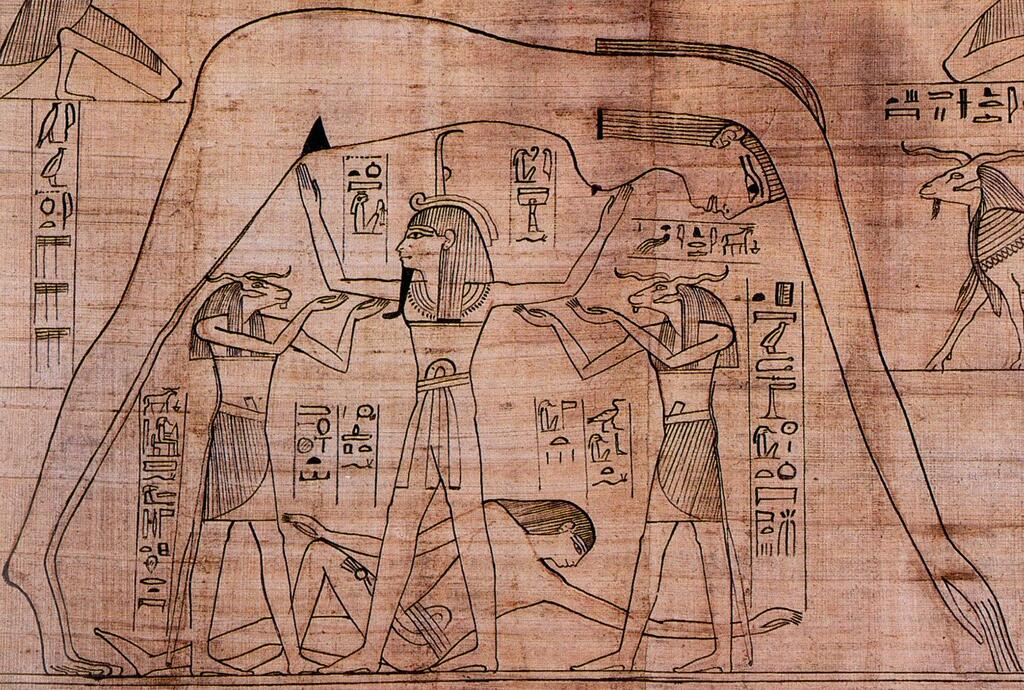Getting your Trinity Audio player ready...
A new study, published in the Journal of Astronomical History and Heritage, showed that the Milky Way galaxy played a significant role in the Egyptian goddess Nut's role as the goddess of the sky, citing ancient Egyptian sources. According to the study, the Milky Way symbolized Nut's outstretched arms during the winter months, and also embodied her spine stretching across the sky during the summer months.
Nut, sister and wife of Geb, is the goddess of the sky in Egyptian mythology, and her body is made up of the stars. According to Egyptian belief, Nut symbolizes the belief in eternal life and resurrection, as every evening she would swallow the sun for the duration of the night, passing it through her womb, to birth it again in the morning.
Additionally, she is attributed with the ability to serve as a barrier between chaotic forces outside the world and the ordered and rational world, which is the reason behind Nut being depicted as a woman in the form of an arch protecting the world beneath her.
In the Book of the Dead – a guide meant to prepare one for the afterlife in ancient Egypt – Nut is described as protecting the dead while feeding and quenching their thirst.
"I chanced upon the sky-goddess Nut when I was writing a book on galaxies and looking into the mythology of the Milky Way. I took my daughters to a museum and they were enchanted by this image of an arched woman and kept asking to hear stories about her," said Dr. Or Graur, an associate professor of astrophysics at the University of Portsmouth.
"This sparked my interest and I decided to combine both astronomy and Egyptology to do a double analysis – astronomical and cross-cultural – of the sky-goddess Nut, and whether she really could be linked to the Milky Way," said Graur, who drew information from a rich collection of ancient sources, including Pyramid Texts (a collection of ancient Egyptian religious texts from the Old Kingdom period, inscribed on the walls of inner chambers and coffins in several pyramids in Saqqara) and coffin texts (texts containing ancient Egyptian burial spells written on sarcophagi and coffins starting from the First Intermediate Period).
Graur also relied on ancient Egyptian astronomical texts (including various mythological topics) focusing on the cycles of decans, which are star groups used as a calendar by the ancient Egyptians, and compared them to figures from the Egyptian night sky.
Graur found compelling evidence that the Milky Way galaxy emphasized Nut's divine presence. He linked Egyptian beliefs to those of other cultures and showed similarities in how different societies interpret the same galaxy.
“My study also shows that Nut’s role in the transition of the deceased to the afterlife and her connection to the annual bird migration are consistent with how other cultures understand the Milky Way. For example, as a spirits’ road among different peoples in North and Central America or as the Birds’ Path in Finland and the Baltics," explained Graur.
"My research shows how combining disciplines can offer new insights into ancient beliefs, and it highlights how astronomy connects humanity across cultures, geography, and time," he concluded.




